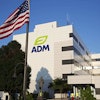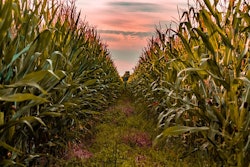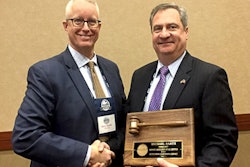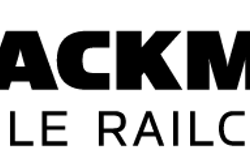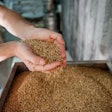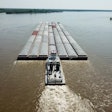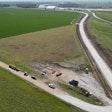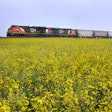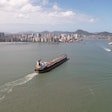
The National Grain and Feed Association (NGFA) today said it looks forward to working with Congress on legislation to finance improvements to America's crumbling infrastructure, including rehabilitating dilapidated locks-and-dams on the U.S. inland waterways system.
NGFA said the release on Feb. 12 of President Trump's legislative concepts for rebuilding U.S. infrastructure represented an important starting point for discussions, and commended the administration for its continued focus on infrastructure and for proposing to streamline and improve the cumbersome and costly permitting process for projects. The administration'slegislative outlinecalls for spending $200 billion in federal funds to spur at least $1.5 trillion in infrastructure investments with state, local and private sector partners. The plan includes $50 billion for capital investments in rural infrastructure projects.
"The NGFA is pleased the Trump administration has prioritized rebuilding the nation's infrastructure, particularly in rural America," said NGFA President Randy Gordon. "Infrastructure is integral to maintaining a successful agricultural supply chain, preserving U.S. competitiveness in the global food and agricultural markets and rejuvenating the economic vitality of rural communities."
But for financing the rebuilding of the vital inland waterways system, NGFA said it believes that the existing public-private partnership in which commercial barge users pay a barge diesel fuel tax into a dedicated Inland Waterways Trust Fund (IWTF), matched by general treasury funds, continues to have merit. Currently, the barge diesel fuel tax is 29-cents-per-gallon, which the barge industry and commercial users (including agricultural stakeholders) urged be increased to that level in 2014. The administration's legislative outline would make the Inland Waterways Trust Fund responsible for operating and maintaining the inland navigation system at an estimated cost eight times that of current trust fund income.
“正如总统所言,大部分的锁和dams on the U.S. inland waterways system long ago surpassed their 50-year lifespan," Gordon said. "Unscheduled breakdowns and stoppages of barge traffic on the upper Mississippi and Illinois River System have increased 700% over the last decade. That is why NGFA will continue to advocate for a final infrastructure package that prioritizes and provides cost-share funding to repair the existing backlog of 25 critical inland waterway modernization projects."
NGFA also expressed strong concern over proposals to impose additional tolling or lockage fees on commercial users of the inland waterways. Such costs likely would result in the diversion of significant volumes of waterborne traffic to other higher-cost and capacity-challenged transport modes -- particularly already-congested highways and several service-challenged freight railroads. NGFA said tolling and lockage fees also would compound existing inequities, given that non-commercial beneficiaries of the inland waterways system, such as municipal and industrial water systems, hydropower generation plants, recreational users and others, do not similarly fund the system.
NGFA noted that inland waterways provide the lowest cost and most environmentally sustainable way to move grains, oilseeds and other agricultural products to export ports, as well as farm inputs (such as fertilizer) to U.S. farmers inland. The United States exports approximately 25 percent of its grain and oilseed crop, with about 60 percent of that volume moving to U.S. Gulf ports via the inland waterways, while another 27 percent moves by a combination of rail and barge (via the Columbia-Snake River System) to Pacific Northwest ports.
NGFA also said it supports deepening and widening navigation channels at U.S. ports to accommodate larger and more efficient vessels that transport bulk and container shipments of grains, oilseeds and grain products.

